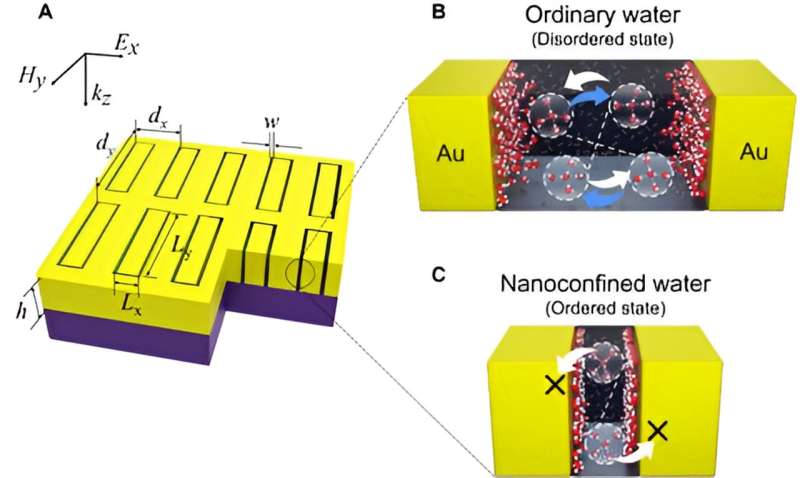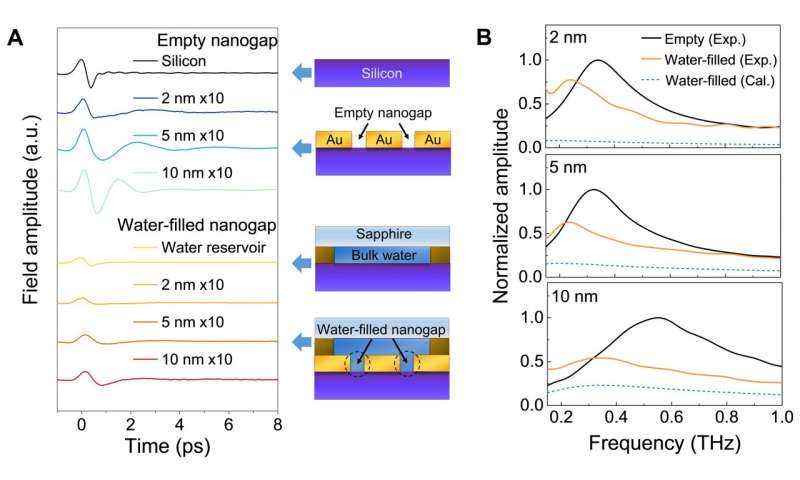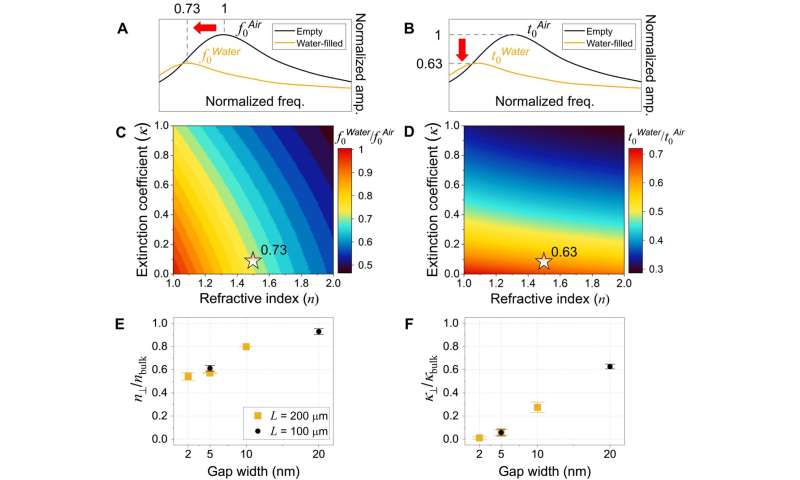This article has been reviewed according to Science X's editorial process and policies. Editors have highlighted the following attributes while ensuring the content's credibility:
fact-checked
peer-reviewed publication
trusted source
proofread
New research reveals terahertz waves' impact on dynamics of nanoconfined water molecules

In a new discovery, researchers have revealed novel insights into the behavior of water molecules confined within nanostructures. Their study, published in Science Advances on April 24, delves into how terahertz (THz) waves influence the dynamics of water molecules confined in two-dimensional (2D) spaces within nanoresonators.
The multidisciplinary team—led by Professor Hyeong-Ryeol Park and including Professor Jeeyoon Jeong (UNIST), Professor Dai-Sik Kim (UNIST), Professor Noejung Park (UNIST), Professor Joonwoo Jeong (UNIST), Professor Kyungwan Kim (Chungbuk National University, and Professor Yun Daniel Park (Seoul National University)—used innovative technique to investigate water molecule dynamics at the nanoscale level.
By utilizing metallic loop nanogaps to enhance light-matter interactions, the team conducted a comprehensive analysis of nanoconfined water across varying gap widths, ranging from 2 to 20 nanometers (nm). Their experimental findings shed light on the interplay between interfacial effects and confinement effects on the complex refractive indices of nanoconfined water, showcasing the suppression of low-energy vibrational modes even at larger gap widths.
Lead author Hyosim Yang from UNIST highlighted the significance of the study, emphasizing the exploration of water molecule dynamics in narrow gaps at high THz frequencies, uncovering novel phenomena that were previously unexplored.
-

THz transmissions of empty and water-filled nanogaps with different gap widths. Credit: Science Advances (2024). DOI: 10.1126/sciadv.adm7315 -

Quantitative estimation of the complex refractive index, ~=+, of gap-filling water within a gap width range of 2 to 20 nm. Credit: Science Advances (2024). DOI: 10.1126/sciadv.adm7315
The team's utilization of atomic layer lithography technology enabled the fabrication of nanoresonators with unprecedented precision, allowing for enhanced sensitivity in measuring molecular motion.
Their findings not only confirmed the suppression of picosecond collective dynamics of water molecules by interfacial effects in sub-2-nanometer gaps, but also revealed intriguing insights into the reduction of clustering motion at larger gap widths.
Co-author Gangseon Ji from UNIST highlighted the implications of the research, stating, "This study uncovers the dual effects of interfacial and confinement mechanisms on water dynamics in nanoconfined spaces, offering new perspectives on solid-like behaviors exhibited by confined water molecules."
Professor Park emphasized the broader implications of the study, noting its potential applications in investigating superionic phases of 2D water molecules and studying molecular dynamics in solvents, like DNA and RNA.
More information: Hyosim Yang et al, Suppressed terahertz dynamics of water confined in nanometer gaps, Science Advances (2024). DOI: 10.1126/sciadv.adm7315
Journal information: Science Advances





















